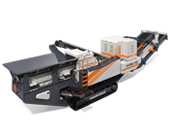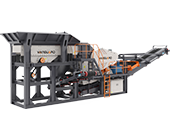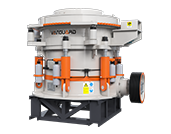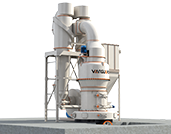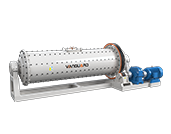In the sand and gravel industry, we often say 1-2, 1-3 gravel. If you enter the industry early, you must understand what it means, but newcomers may wonder what size gravel is this?
The 1-2 and 1-3 stones were a question that a friend consulted a few days ago, so here we will introduce them first.

The particle size of the stones in the mining industry is usually between 5mm-31.5mm, and the 1-2/1-3 gravel are the general term for the stones and gravel used in the pavement. The specific stone sizes are as follows:
1-2 gravel:crushed stones with a particle size of 10-20mm;
1-3 gravel:gravel with a particle size of 16-31.5mm;
Furthermore:
0-5 sand:sand with a particle size of 0-5 mm;
5-1 gravel:crushed stone with a particle size of 5-10mm;
2-4 gravel is two-four, 1/4-1/2 inches in the international standard, which means 10-15mm gravel;
4-6 gravel four-six, 1/2-3/4 inch in the international standard, which means 15-20mm gravel.
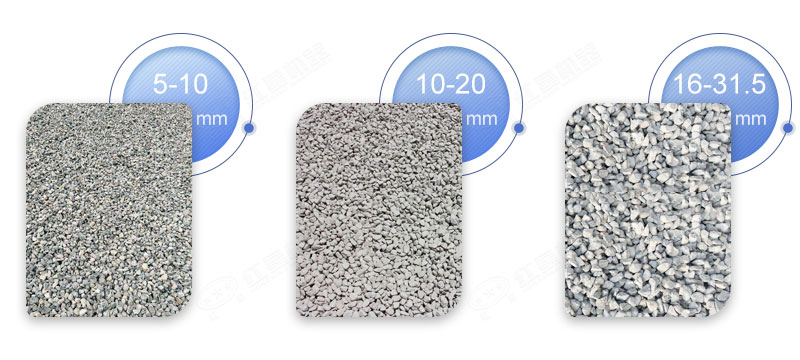
Many newcomers may have doubts about the basic terminology of some industries. Let's briefly introduce them to help you better understand and communicate.
1. Aggregate:
Granular loose materials such as rock particles act as skeletons, filling and stabilizing volume in concrete. According to the particle size, it can be divided into coarse aggregate and fine aggregate.
2. Coarse aggregate (stone):
Rock particles larger than 4.75mm, including pebbles and crushed stones:
3. Pebble:
Rock particles with a particle size greater than 4.75mm formed by natural weathering, water flow handling, sorting, and accumulation.
4. Crushed stone:
Through processes such as soil removal, crushing, shaping, screening, and powder control, the rocks, pebbles, and mine tailings have not been treated by chemical methods that rock particles with a greater particle size of 4.75mm.
5. Fine aggregate (sand):
Rocks with a particle size less than 4.75mm. Including natural sand and artificial sand.
6. Natural sand:
Naturally formed, artificially mined and sieved rock particles with a particle size of less than 4.75mm, including river sand, lake sand, mountain sand, desalinated sea sand, but excluding soft and weathered rock particles.
7. Artificial sand:
Including machine-made sand and mixed sand.
8. Machine-made sand:

Through processes such as soil removal, mechanical crushing, shaping, screening, and powder control, rocks, pebbles, and mine tailings have not been treated by chemical methods, the particle size is less than 4.75mm.
9. Mixed sand:
Sand that mixing natural sand and machine-made sand in a certain proportion.
Some friends may ask, what is the size of the coarse sand and fine sand? Don't worry, as follows:
According to the fineness modulus (Mx), the specifications of machine-made sand are divided into four types: coarse, medium, fine, and extra-fine.
1. Coarse sand:The fineness modulus is 3.7~3.1, the content of particles larger than 0.5mm is more than 50% of the total weight, and the average particle size is 1mm~0.5mm.
2. Medium sand:Sand with a fineness modulus of 3.0~2.3, the mass of particles larger than 0.25mm is more than 50% of the total weight, and the average particle size is 0.5~0.25mm.
3. Fine sand:Sand with a fineness modulus of 2.2~1.6, particles with a particle size greater than 0.075mm exceeding 85% of the total weight, and sand with an average particle size of 0.25mm~0.125mm.
4. Extra-fine sand:The fineness modulus is 1.5-0.7, and the average particle size is below 0.25mm.

In addition, the following terms may also be heard frequently.
1. Mud content:The content of particles smaller than 75μm in natural sand, pebbles and crushed stones.
2. Powder content:The content of particles with a size of less than 75μm in the artificial sand.
3. Stone powder methylene blue value (MB value):An index used to determine the adsorption performance of stone powder.
4. Needle and flaky particles:The length of the machine-made sand particles is 2.4 times the average particle size of the particle size class to which the particles belong is needle-shaped particles; Those with a thickness less than 0.4 times the average particle size are flaky particles. The average particle size refers to the average value of the upper and lower limits of the particle size.

